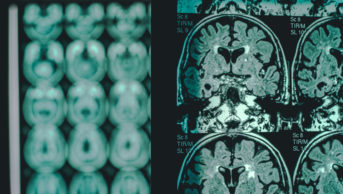
Shutterstock.com
Researchers have found that a repurposed anti-inflammatory and anti-allergic drug previously developed for asthma improved blood glucose control in people with type 2 diabetes and non-alcoholic fatty liver disease.
The study
[1]
, published in Cell Metabolism, involved 42 obese patients with type 2 diabetes who were randomly assigned to receive amlexanox or placebo for 12 weeks.
Overall, patients who received the drug had a significantly greater reduction in haemoglobin A1c (HbA1c) levels than those who received placebo. Fructosamine levels, a marker of shorter term glucose control, were also significantly different between the two groups, as was fasting blood glucose.
However, further analysis showed a discrepancy in how patients responded to the drug, with only seven (around a third) of those who received it experiencing a clinically meaningful HbA1c reduction.
The researchers found that these “responders” had a much greater reduction in fructosamine than the overall cohort and also showed improvements in insulin sensitivity and liver fat loss.
By studying gene expression in subcutaneous fat samples, the researchers found that responders had a unique pattern of gene expression from non-responders that indicated a higher baseline level of inflammation.
Also, samples taken at the end of the study showed changes in gene expression that pointed towards increased fuel oxidisation and insulin sensitivity, which had previously also been observed in treated mice.
Amlexanox was developed in Japan in the 1980s and has been studied for the treatment of asthma, allergic rhinitis and aphthous ulcers. The drug works by inhibiting two enzymes involved in inflammation that were found to be elevated in obese people.
The researchers say that it is still early days for its potential application in diabetes and much more research will be needed. They plan to explore whether responders can be selected at baseline and combining the drug with other diabetes or obesity therapies.
“The most exciting part of this is that we have a new drug that has never been studied before,” said lead author Alan Saltiel from the University of California San Diego School of Medicine. “It’s a new mechanism for a diabetes and fatty liver drug. It’s promising, but there are a lot of questions that still need to be answered.”
References
[1] Oral EA, Reilly SM, Gomez AVet al. Inhibition of IKKÉ› and TBK1 improves glucose control in a subset of patients with type 2 diabetes. Cell Metab 2017;26:157–170.e7. doi: 10.1016/j.cmet.2017.06.006


